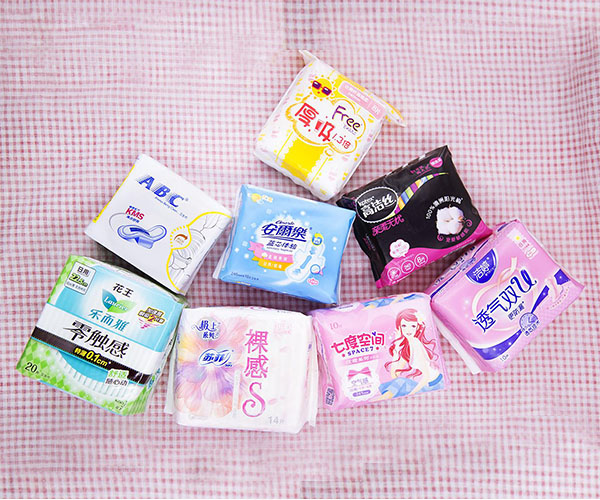Introduction:
For the majority of women, sanitary pads are an indispensable product in their lives. However, have you ever been curious about the manufacturing process and the raw materials used in sanitary pads? In this blog post, we will unveil the mystery behind the production of sanitary pads and explore the sanitary raw materials required for their manufacture!
Perforated Film: The perforated film, serving as the waterproof and breathable layer, constitutes the topmost layer of the sanitary pad. It plays a crucial role in preventing liquid from seeping through and maintaining a dry sensation. This layer is composed of a special perforated film that effectively prevents liquid penetration while allowing air to pass through.
SMMS Hydrophobic N.W: This SMMS Hydrophobic nonwoven fabric is one of the core materials of the sanitary pad. It consists of multiple layers of fine fibers, exhibiting high moisture absorption and softness for enhanced comfort. This nonwoven fabric also prevents liquid leakage and ensures safety and dryness.
Acquisition and Distribution Layer (ADL): The acquisition and distribution layer contributes to the distribution and storage of liquid within the sanitary pad. It rapidly absorbs and disperses liquid, keeping the surface dry and comfortable.
Wrapping Tissue: The wrapping tissue is used to package the sanitary pad, providing protection and hygiene. It ensures the cleanliness and neatness of the sanitary pad, offering a layer of protection prior to use.
Virgin Wood Pulp: Virgin wood pulp is an absorbent material used in sanitary pads. It possesses high moisture absorption capacity, rapidly absorbing a significant amount of liquid and retaining it to maintain surface dryness.
Super Absorbent Polymer (SAP): SAP also known as the superabsorbent polymer, is a critical component of the sanitary pad. This material absorbs liquid and transforms it into a gel, preventing liquid leakage and providing secure protection.
PE Film: The backing film, serving as the bottom layer of the sanitary pad, prevents external liquid penetration. Made of polyethylene, it exhibits waterproof properties, ensuring dryness and comfort for the user.
Bag Film: The bag film is used for packaging and sealing the sanitary pad. It maintains the dryness, sterility, and integrity of the sanitary pad, guaranteeing product quality and hygiene.
Construction Glue and Positioning Glue: The construction glue is used to bond various parts of the sanitary pad together, ensuring structural integrity. The positioning glue is employed to fix the positions of different layers, preventing shifting and loosening.
Release Paper: The release paper is used to protect the adhesive area of the sanitary pad. It is torn off before use, exposing the adhesive so that the sanitary pad can adhere to the underwear.
Easy Tape: The easy tape is a convenient means of securing the sanitary pad. It firmly attaches the sanitary pad to the underwear, providing a secure and comfortable user experience.
For ultra-thin sanitary pads, the materials used slightly differ from conventional pads. They utilize airlaid paper and SAP paper (superabsorbent polymer paper) as substitutes for wrapping tissue, acquisition and distribution layers, and virgin wood pulp, achieving a thinner, lighter, and more breathable design.
Conclusion:
Through today's sharing, we have discovered that sanitary pads are composite products composed of various materials. Each material serves a specific function and collectively provides users with a comfortable, safe, and efficient experience. Understanding these raw materials can help us better grasp the manufacturing process and quality requirements of sanitary pads.
Furthermore, with technological advancements and changes in lifestyle, the production of sanitary pads continues to innovate and improve. In the future, we may see the emergence of more environmentally friendly and sustainable materials, offering users a wider range of choices and better experiences